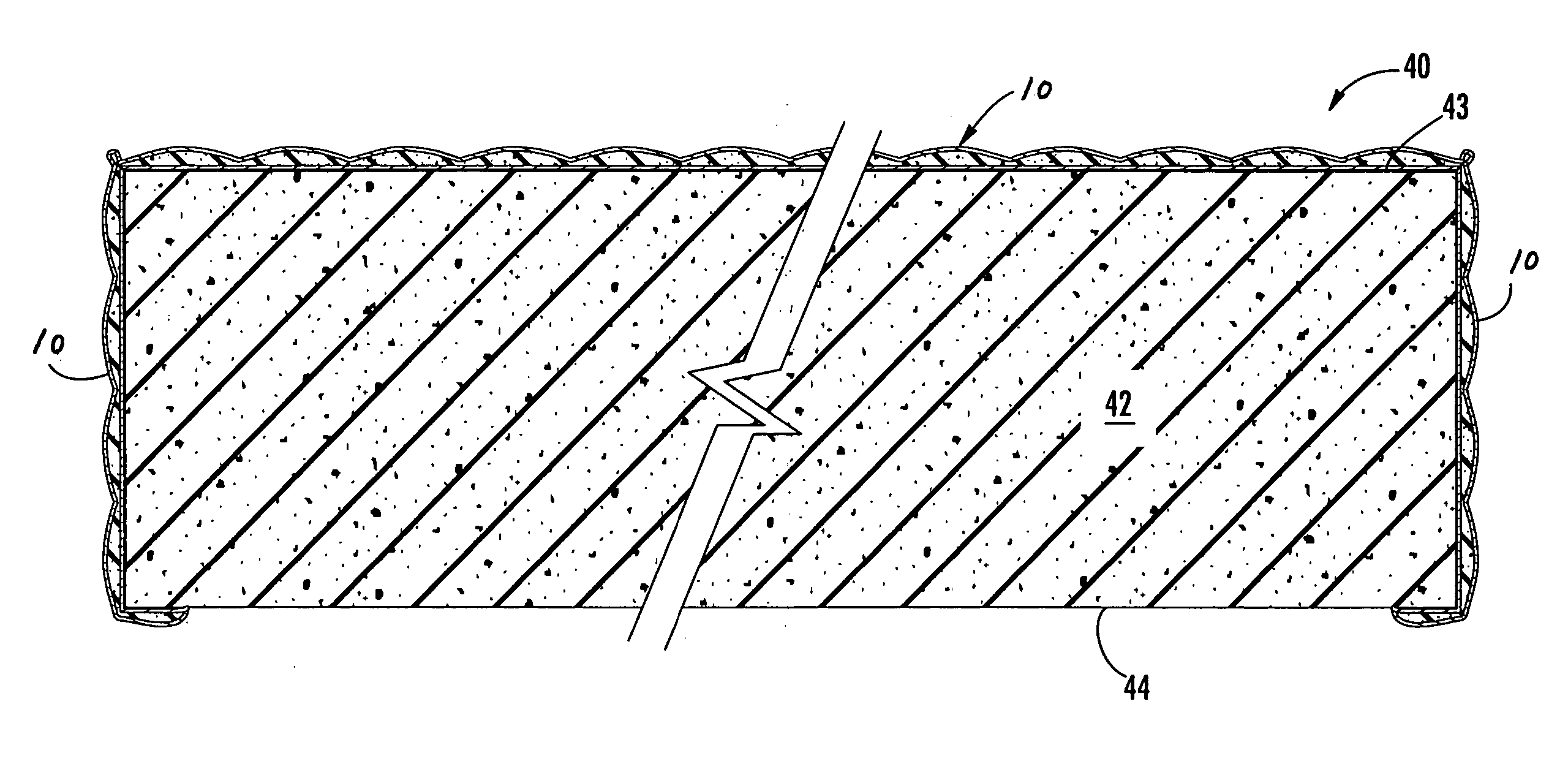Upholstery panels with fire resistant backing layer
a technology of backing layer and upholstered article, which is applied in the field of fire prevention, can solve the problems of affecting the appearance of the upholstered article, the inability of the backing layer and the cushioning layer to maintain the flame and heat resistance integrity, and the variations in style construction, so as to reduce the cost and weight, the effect of greater styling latitude and severe limitations
- Summary
- Abstract
- Description
- Claims
- Application Information
AI Technical Summary
Benefits of technology
Problems solved by technology
Method used
Image
Examples
examples
[0044] Two control panels were prepared. The first panel was a 9.6 ounces per square yard (OSY) needlepunched fabric that was formed from 80% Visil fiber and 20% modacrylic fiber. The Visil fiber is from Sateri OY of Finland and the Modacrylic is Protex PBX from Kaneka Corp. of Japan. The second panel was made with of the same composition with a basis weight of 6.4 oz / sy.
[0045] To test the performance of the material, a 12″×12″ panel of the test sample was placed atop a 2 inch thick panel of urethane cushioning foam. A thermocouple was positioned behind the fabric barrier between the foam and fabric. The panel was suspended in a laboratory hood, and exposed to the flame from a California TB129 burner, for three (3) minutes. The temperature behind the barrier was measured over the three minute test, particularly noting the temperatures at 50 and 70 seconds and the peak temperature. Additionally, observation was made as to whether the sample allows ignition of the foam, or cracks ope...
PUM
| Property | Measurement | Unit |
|---|---|---|
| thickness | aaaaa | aaaaa |
| thermal shrinkage | aaaaa | aaaaa |
| length | aaaaa | aaaaa |
Abstract
Description
Claims
Application Information
 Login to View More
Login to View More - R&D
- Intellectual Property
- Life Sciences
- Materials
- Tech Scout
- Unparalleled Data Quality
- Higher Quality Content
- 60% Fewer Hallucinations
Browse by: Latest US Patents, China's latest patents, Technical Efficacy Thesaurus, Application Domain, Technology Topic, Popular Technical Reports.
© 2025 PatSnap. All rights reserved.Legal|Privacy policy|Modern Slavery Act Transparency Statement|Sitemap|About US| Contact US: help@patsnap.com


